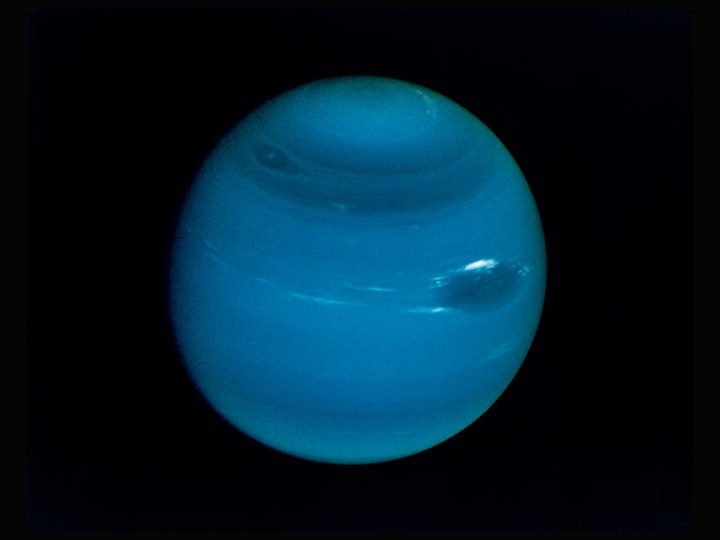Odd Helium Star Could Become One Of The Universe's Most Impressive Magnets
The revelation could at long last purpose the subject of how these bizarre and significant articles structure.
The star HD 45166 has bewildered cosmologists for a long time. Dr Tomer Shenar got so entranced with its presence that he has gone through years attempting to make sense of its temperament. All the while, he might have settled a considerably greater secret: the wellspring of the universe's most impressive magnets.
HD 45166 is a Wolf-Rayet star. These helium-rich stars are the most sizzling classification of star we have found, in HD 45166's case, right multiple times as sweltering as the Sun. Their gigantic intensity actually intends that notwithstanding being outstandingly interesting, they make an outsize commitment to the universe's load of heavier components.
Being so outrageous, Wolf-Rayet stars have a great deal of unexplained elements, however HD 45166 has a few especially inquisitive properties, including a phantom mark not at all like some other.
"This star turned into somewhat of a fixation of mine," The College of Amsterdam's Shenar said in a proclamation. "I had an Aha second while perusing the writing: 'Consider the possibility that the star is attractive.'"
Shenar and partners utilized the Canada-France-Hawaii Telescope to concentrate on HD 45166 in phenomenal detail, looking for the polarization and split ghastly lines that demonstrate solid attractive fields. Joined with documented perceptions from different instruments, they have uncovered beforehand obscure highlights about the star, in particular that it has an attractive field of 43,000 Gauss.
By examination, the World's attractive field is about a portion of a Gauss and a cooler magnet is around 50 Gauss. You truly would have no desire to be nearby this thing on the off chance that you have a pacemaker.
By and by, this is a long way from a record. Magnetars, an intriguing subset of neutron stars, have attractive fields of many trillion Gauss, a figure all the way out of keeping with the remainder of the universe. As of recently, stargazers have not had the option to make sense of how these amazing fields structure, and why some neutron stars are so attractive while others are not, yet Shenar thinks HD 45166 is the sign.
Like other Wolf-Rayet stars, HD 45166 is huge enough that it will ultimately turn into a cosmic explosion. Without a doubt, that time isn't too distant, talking, since it has consumed the majority of its hydrogen, which is the reason it is so helium-rich. Whenever it has completed the process of melding quite a bit of its helium into different components, its center will fall and detonate, leaving a neutron star behind.
Being far denser than the star from which it came (and without a doubt denser than something besides a dark opening), the neutron star's massive attractive motion will make a field more noteworthy than the one HD 45166 presently has. Very probable, that equivalent measure of attraction pressed into a more tight space will be adequate to make a magnetar. It could appear to be peculiar that an attractive field would endure a blast as strong as a cosmic explosion undisrupted, yet that is the very thing heavenly development models recommend will happen.
This actually leaves the subject of why a few stars are so attractive to begin with. HD 41566's mystery might lie in Shenar's doubt it was shaped from two stars that developed in an extremely close circle, passing their external layers to and fro until their circles rotted, and they consolidated.
This is whenever an enormous helium first star has been viewed as attractive, and could ignite a competition to see whether it is essentially as strange as it appears. "It is energizing to reveal another sort of galactic article," Shenar said, "Particularly when it's been flying under the radar from the beginning."
In the revelation cycle, Shenar discovered another fascinating things about HD 45166. Albeit definitely known to be essential for a paired framework, closer perceptions uncovered it circles in excess of multiple times further from its buddy than recently suspected, precluding the chance their communications stripped away its external layers. It's likewise significantly lighter than expected, around two times the mass of the Sun. That is odd, in light of the fact that any remaining Wolf-Rayet stars are something like 8 sun based masses.
HD 45166 is around 3,000 light years away, far enough to be totally protected when it goes cosmic explosion, presumably in a huge number of years, however close to the point of giving us an extraordinary show.
The discoveries are distributed in Science.






Comments
There are no comments for this story
Be the first to respond and start the conversation.